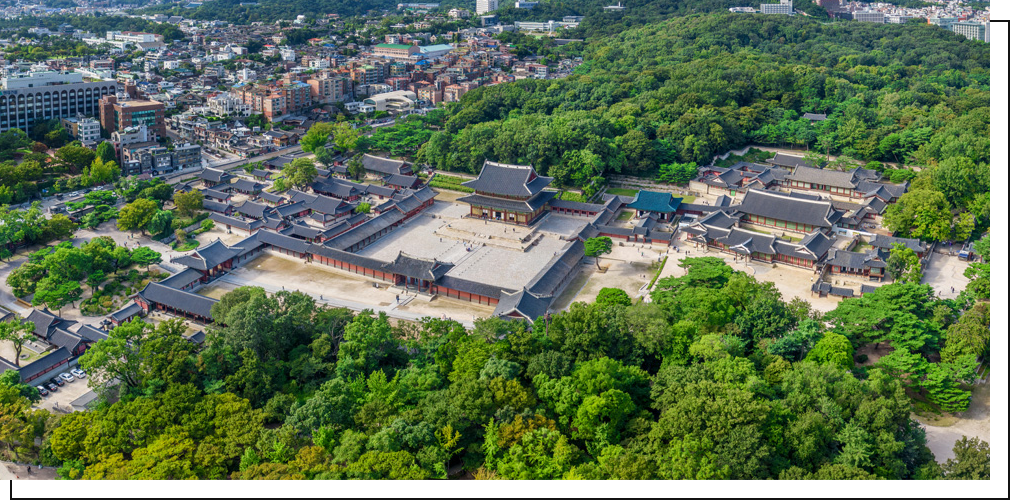


| Classification | Detail |
|---|---|
| 1405 (the 5th year of King Taejong) |
Changdeokgung Palace was established as a secondary palace to Gyeongbokgung Palace |
| 1406 (the 6th year of King Taejong) |
The Secret Garden was created |
| 1462 (the 8th year of King Sejo) |
The Garden was expanded |
| 1592 (the 25th year of King Seonjo) |
Changdeokgung Palace was destroyed due to the Japanese invasion |
| 1610 (the 2nd year of King Gwanghaegun) |
Changdeokgung Palace was rebuilt before any other palaces |
| 1623 (the 1st year of King Injo) |
Most buildings were lost in the Injo coup |
| 1636 (the 14th year of King Injo) |
The Garden was expanded |
| 1647 (the 25th year of King Injo) |
Seonjeongjeon Hall, Daejojeon Hall, Huijeongdang Hall were built |
| 1704 (the 30th year of King Sukjong) |
Daebodan Altar was erected in the Garden |
| 1776 (ascension of King Jeongjo) |
Juhamnu Pavilion and Gyujanggak Library was built in the Buyongji Pond area |
| 1828 (the 28th year of King Sunjo) |
Yeongyeongdang Complex was built in the Aeryeonji Pond area |
| 1847 (the 13th year of King Heonjong) |
Nakseonjae Complex was built on the Nakseondang Hall site |
| 1910 (the 4th year of Yunghui Emperor) |
The Korea–Japan Treaty of 1910 was signed at Heungbokheon House |
| 1917 |
The sleeping quarters (Daejojeon Hall and Huijeongdang Hall) were destroyed in the great fire |
| 1920 |
Gangnyeongjeon and Gyotaejeon Halls of Gyeongbokgung Palace was moved to rebuild the sleeping quarters |
| 1960 |
Empress Sunjeong, the second queen of Emperor Sunjong, returned to Changdeokgung Palace |
| 1989 |
Princess Deokhye and Crown Princess Yi Bangja passed away |
| 1990 onward |
The restoration project was commenced |
| 1997 |
Changdeokgung Palace Complex was listed in the UNESCO World Heritage List |